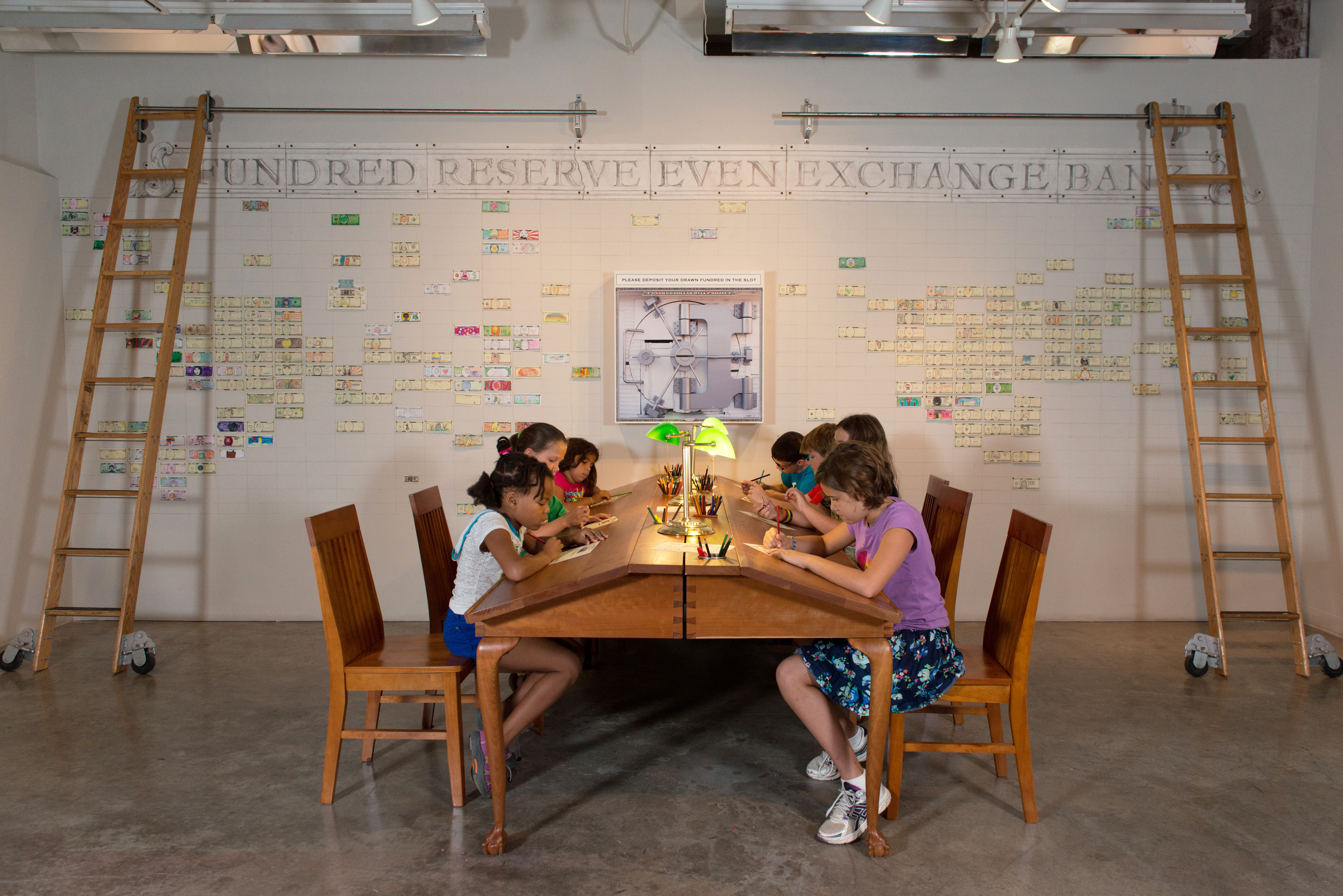
Students draw Fundreds in the Charlotte branch of the Fundred Reserve Even Exchange Bank, 2013. Fundred Project, 2008-2019. Photo: Ben Premeaux. Courtesy of the Fundred Project.
Editor’s Note: How can an artist respond to catastrophe? After the 2005 hurricane Katrina devastated New Orleans, Mel Chin visited the Crescent City to see what art can do, if anything, to remedy such a circumstance. In 2008, Art21 partnered with Mel Chin to announce the Fundred Dollar Bill Project, a creative currency initiative to raise public awareness of lead levels in the soil of New Orleans. After thirteen years of tours and workshops held across the nation, engaging hundreds of thousands of participants, resulting in collaborations with politicians, Chin has decided to end this part of the initiative—now referred to as the Fundred Project—so that it can realize its full potential of achieving a lead-free environment nationwide. In a conversation with Art21, Mel Chin and the Fundred Project director, Amanda Wiles, share the impact of bringing the project to the nation’s capital, and discuss the project’s next steps. This interview was conducted via telephone in July, 2019, by Art21’s associate digital content manager, Melissa Saenz Gordon.
ART21: Founded in 2006, Operation Paydirt and the Fundred Dollar Bill Project were born from the destruction caused by Hurricane Katrina in 2005. Can you talk about the project and its beginnings?
MEL CHIN: I was compelled to do something that relied on science, which led me to a research scientist at the Tulane/Xavier Center for Bioenvironmental Research, who had been studying the lead in the soil of New Orleans for twenty-five years. He showed me a map of New Orleans: it showed that thirty to fifty percent of inner-city children were poisoned with lead before Hurricane Katrina, and there was little being done about it or even being mentioned. That’s when I got the idea of showing the value of individuals—especially those who are most threatened—through a work of art.
The project began in New Orleans, but it’s about lead in the blood, brains, and bodies of young people nationwide. A drawing from an individual is like a vote, petition, or voice. Originally, we thought about the project in terms of an even exchange, to solve the problem in New Orleans, but we realized it was much more valuable than that: these voices could possibly transform [political] policy in the end. And that’s where we are now.
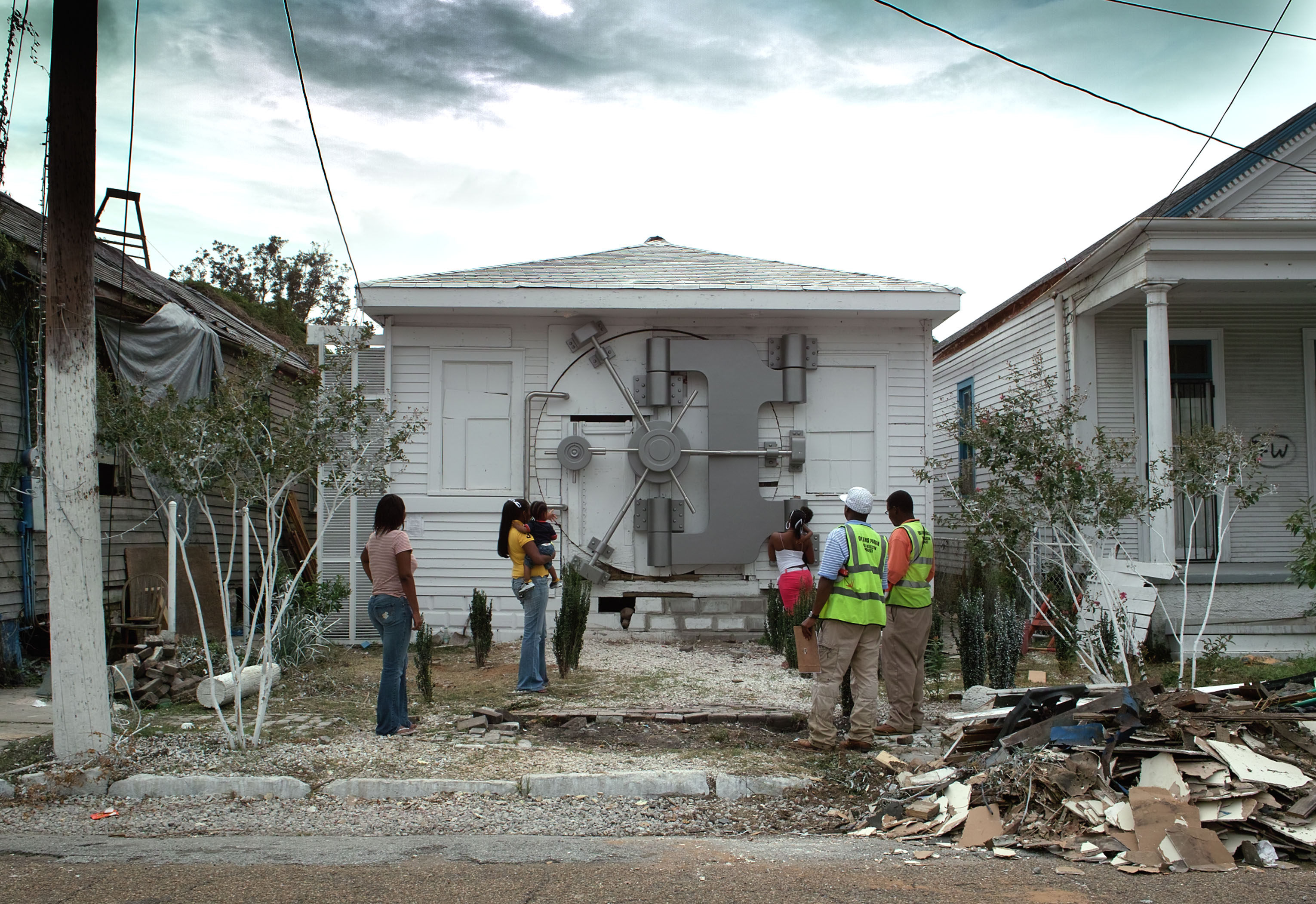
Safehouse in New Orleans, the location which launched the Fundred Project in 2008, 2010. Fundred Project, 2008-2019. Courtesy of Fundred Project.
ART21: What prompted the completion of the project?
CHIN: We’re not ending the project, but we are ending a critical phase of Fundred accumulation and attempting to use the Fundreds not as a lobbying tool but rather to represent voices from across the United States and assist in an act of Congress that could bring relief.
ART21: What about Hurricane Katrina guided you to investigate lead levels in the soil?
“This is not about me making an art project; it’s about people’s lives.”
—Mel Chin
CHIN: At first, I wasn’t focused on lead. My thoughts were more like: What could one possibly do? My work on the project called Revival Field made me aware of the issues of heavy metals in the environment. Several reports were released at the time by the National Resources Defense Council and the Environmental Protection Agency, reporting conflicting ideas about the environmental reality and lead levels of New Orleans (the status of which were bad and worse).
I want to emphasize that it’s difficult to tell kids that they’re poisoned or to tell parents and grandparents. That’s not what I’m supposed to do. This is not about me making an art project; it’s about people’s lives that have been wrecked and lost, and it was not something that I could take lightly nor do alone.
The project is both all about lead and not about lead; it’s about the value of a person. I asked how much it would take to fix New Orleans—updating all the bad parts, cleaning the soil—and at that time, the cost was estimated at three hundred million dollars. As an artist, I know I can’t raise that amount. I can barely raise three thousand dollars. But [I knew] we could make that much. I immediately saw the possibility of people drawing bills to represent some value, and that’s how the project emerged.
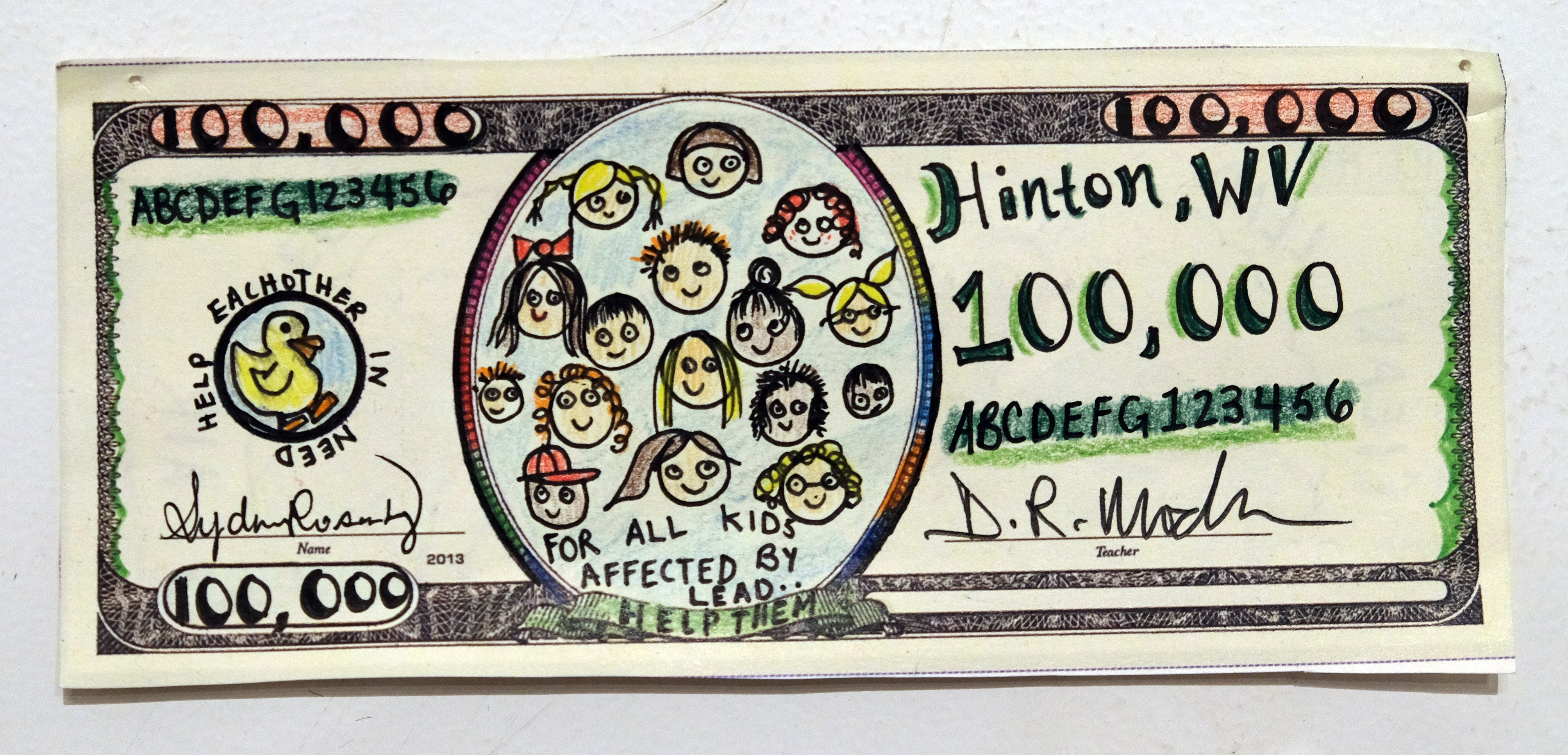
Fundred artist. Fundred Project, 2008-2019. Fundred Dollar Bill from the Fundred Reserve. Mixed media, paper; 2 ⅔ x 6 1/15 inches. Courtesy of the Fundred Project.
ART21: How many Fundreds have been made in total? Was there a Fundred workshop that was particularly moving?
CHIN: There are nearly half a million Fundred voices on view and that have been presented to our nation’s leaders in Washington, D.C. At one Fundred collection in the city of Charlotte, North Carolina, where we collected more than forty thousand drawings through the school system, I met an educator who worked in the poorest section of the city. None of these kids knew who I was, or cared, but they were given the opportunity to create something, and they learned about the problem. They were so used to being told that everything they have is donated by someone—that pencil or piece of paper—but this project gave them great joy: to draw something that had enough value to give to someone else. I never met the kids, and I haven’t seen that educator again, but this is what the project is about. It’s about that child in Charlotte who now represents the state of North Carolina in this quest: to relieve that child, or their friends, or their family, who may be having a problem with lead. And that means we did something, you see?
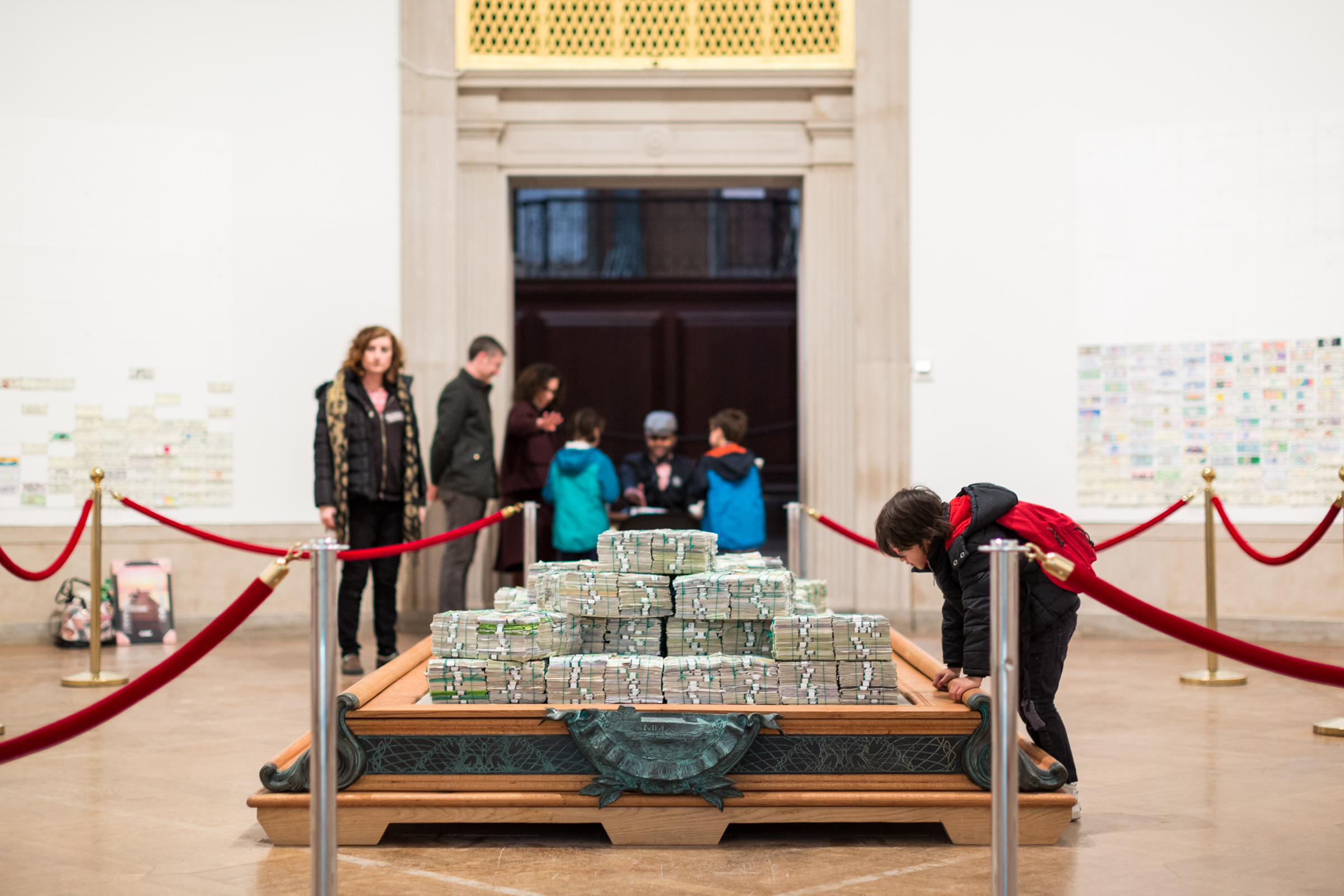
A young visitor to Fundred Reserve gets up close to see the 450,000 Fundreds on view. Fundred Project, 2008-2019. Photo: Yassine El Mansouri. Courtesy of the Fundred Project.
ART21: Amanda, you helped to make the project public in 2007, presenting at the National Art Educators conference and connecting it with teachers. What is your role and how has the project taken shape over the years?
“As soon as people started to draw Fundreds, the project was no longer just about me.”
—Mel Chin
AMANDA WILES: I’m the director of the project and the chief accountant, in that I account for all the Fundreds by state. I have scanned and documented many of them over the last eleven years or so. Over the past few years of the Fundred Project, we’ve been working to get the voices of folks who are affected by lead to their policy makers and representatives. This spring, we brought residents from Flint, Omaha, Cincinnati, New Orleans, and Grand Rapids to D.C., people who have felt the impact of lead in various ways, and they’re able to tell their personal stories directly to their representatives.
CHIN: This is why we ultimately brought the project to D.C.: in order to put its value to good use and toward the eradication of childhood lead poisoning. It is for the people and needed to be by them. That is a vital part of the project.
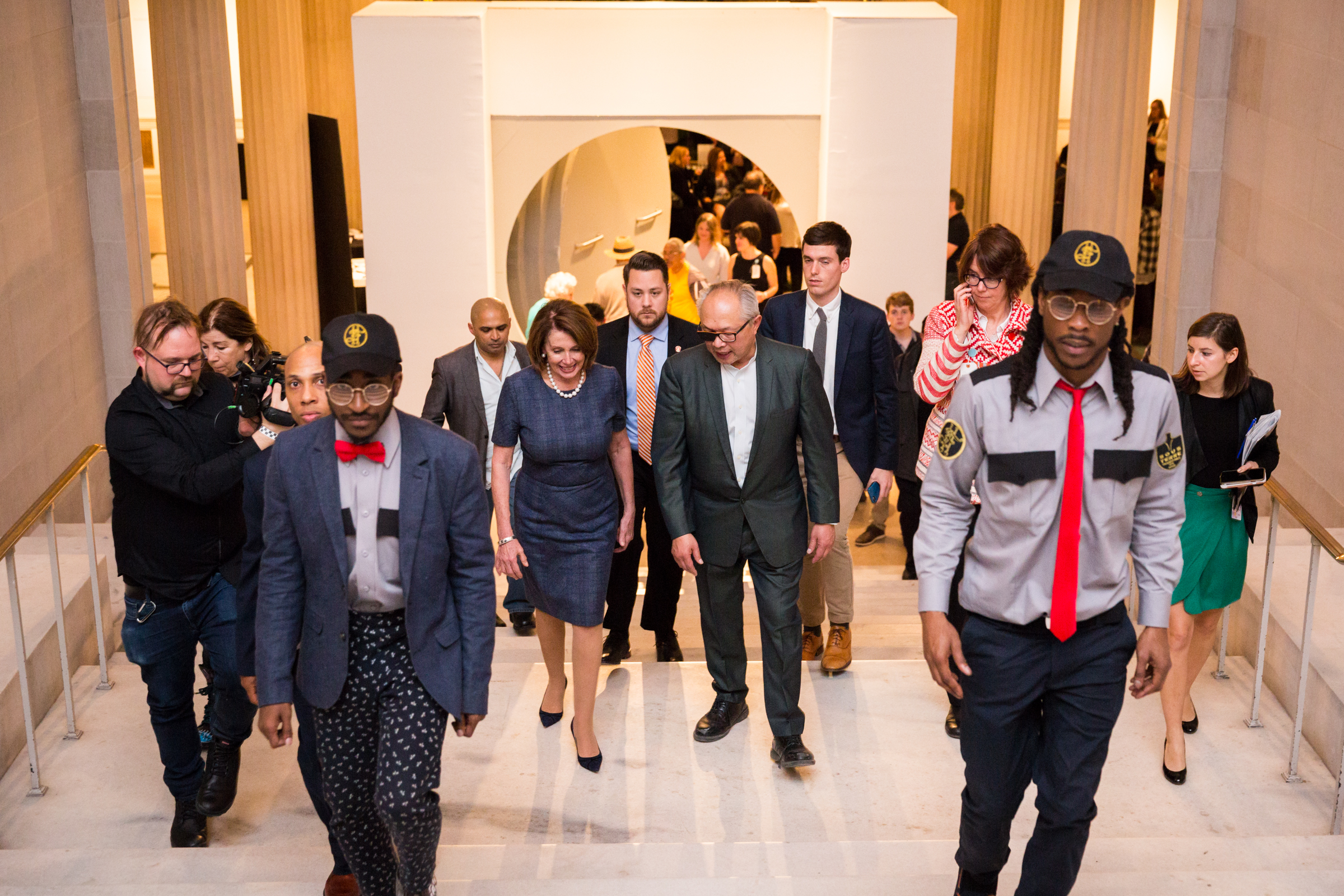
Fundred guards and Mel Chin take House Democratic Leader Nancy Pelosi to see the Fundred Reserve. Fundred Project, 2008-2019. Photo: Yassine El Mansouri. Courtesy of the Fundred Project.
ART21: What was the structure of the meetings with policy makers and what has resulted?
CHIN: What we do is arrange for someone in the House or the Senate—a member or aide, sometimes a senator or congressional leader—to meet their constituents, who present a list of policy directives useful in ending childhood lead poisoning, as framed by policy wonks at The National Center for Healthy Housing and the Green & Healthy Homes Initiative.
As the interface and as evidence, we brought in Fundreds, tens of thousands from their state. The response is not something that we are there to frame because we’re not there to lobby, or get money, or proselytize but rather to present the case that exists and the possibility of ending the problem.
Once, we went to the office of Representative Amash [of Michigan] and were met by an aide who was not prepared for us and didn’t seem to know why we were there, but then [Amash] walked in. He sat there and was very articulate and patient with his constituents and their children. We walked out not thinking about where he stood as a Republican or as a Democrat but thinking he was an ally. I think it’s powerful to say that. House Leader Pelosi was incredibly empathetic and personable when she met with constituents from all over the country. She came to one of our presentations and understands the problem of lead more than a lot of people.
ART21: It sounds like this project, this artwork, has accomplished quite a lot.
CHIN: We’ve done a lot, but until lead is dealt with in some concerted way, we’re not done. We’re done with a very important phase. We have enough Fundred capital in that we represent enough people from different states that we can continue these meetings with families and their [congressional] leaders. We’re currently supporting an act of Congress called the Lead-Safe Housing for Kids. It’s been in the works and through a few different iterations over the past couple of years, but it’s currently in committee. This year, Senator Portman (R-Ohio), is one of the leads and is looking at how the Fundred Project can support those efforts, for example, in Idaho, where the congressional representative needs encouragement on that bill.
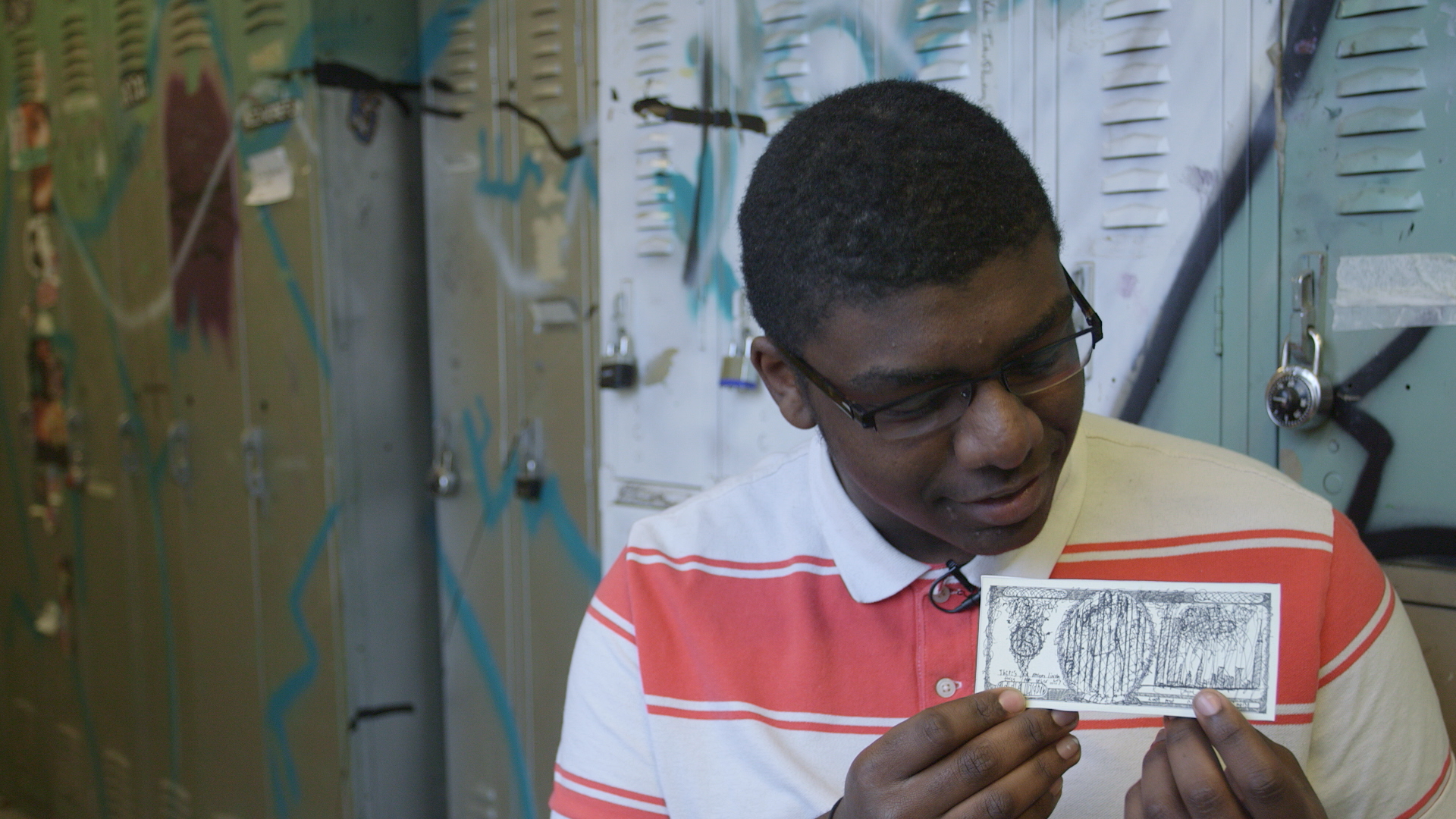
A student with a Fundred in Cincinnati, OH, 2015. Fundred Project, 2008-2019. Photo: One Hundred Seconds. Courtesy of the Fundred Project.
ART21: Would you say that the Fundred network, and Fundred artists, are feeding this piece of legislation?
CHIN: The Fundred network is there to support it. Over the course of our working on the Fundred Project, there was growing understanding that lead exposure might be linked with criminal behavior, based on the 2010 Cincinnati Water Quality Report [which has been issued annually for thirty years]. When we started the Fundred Project in 2006, I knew that lead has contributed to childhood learning disabilities or negative behavioral aspects; that was apparent. Now we’ve reached a point when there’s enough awareness to spark an act of Congress.
WILES: The nimbleness of the Fundred Project allows us to work with different communities nationwide. Clearly the Flint water crisis brought national attention to the issue, which we were able to respond to. The vision is simple, but the kind of mechanics and what’s happened over more than a decade has been of course much more complex and nuanced.

Mel Chin, Amanda Wines and Fundred artists, 2019. Artists along with their families from Grand Rapids, MI, visit their representatives on Capitol Hill. Fundred Project, 2008-2019. Photo: Ben Premeaux. Courtesy Fundred Project.
ART21: What are some of the plans for the next phase of the Fundred Project?
WILES: Over the past several years, we’ve been working with the MIT Community Innovators Lab (CoLab) on creating a toolkit for communities to make Fundreds relevant to their local issues. Some of the individuals who came to D.C. over the past several months are continuing to think about how they can use the Fundreds in the work that they do. There are groups in Grand Rapids, Michigan, and Cincinnati, Ohio, that are thinking about how they can incorporate Fundred-making and creative practices around issues of lead, violence, and so on.
While there will be less central leadership of core collaborators (like Mel, myself, and Pat Clifford) in local Fundred-making, the project allows other people to plug-in and expand on activities. As Mel mentioned, we are dedicated to seeing the policy engagements through, by continuing to work with the nonprofit begun in Mel’s studio, called Source Studio, and looking to get the Fundreds into the collection of a museum.
CHIN: As soon as people started to draw Fundreds, the project was no longer just about me, and if it’s done by the people, it should be owned by the people. If we truly mean what we say, then everyone who drew a Fundred is an artist who will be in a museum collection. That is the proper way to describe this piece. Hopefully, this will be part of the movement that actually created policy to undo the legacy of lead poisoning throughout the country. That would be the greatest gift.
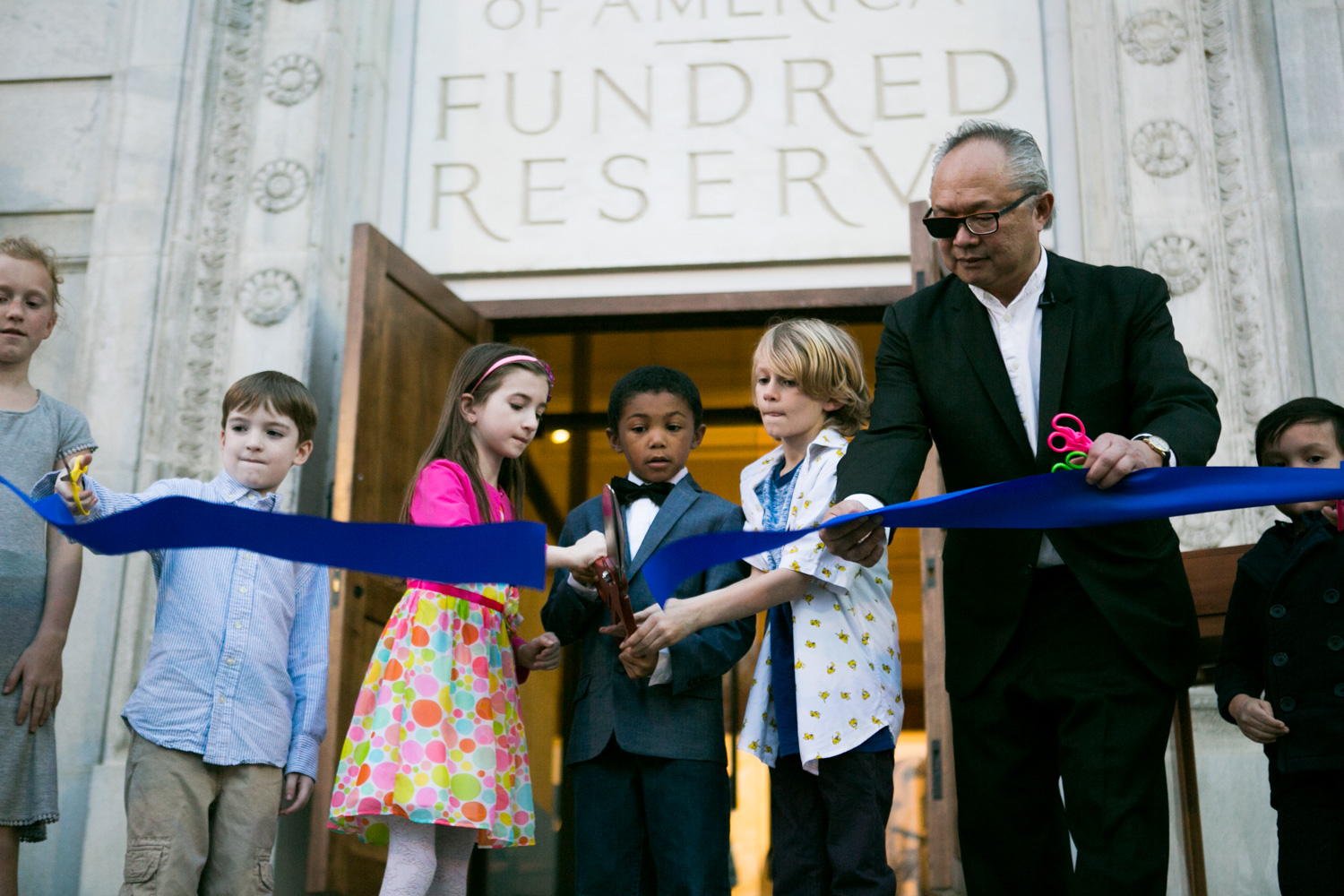
Fundred founding artist Mel Chin, and participating children, cut the blue ribbon to officially open the Fundred Reserve. Fundred Project, 2008-2019. Photo: Sarah Buckner. Courtesy of the Fundred Project.
ART21: Mel, you’ve said before that you are a recovering conceptual artist. Can you talk about how the Fundred Dollar Bill Project aligns with the rest of your practice?
“The definition of being an artist is never so set.”
—Mel Chin
CHIN: Yeah, I used that [expression]. I also say I’m too old to be an emerging artist, so I say, “I’m a submerging artist.” More recently I’ve taken to saying, “I’m becoming an artist.” The definition of being an artist is never so set. The state of becoming more accurately [describes] the way I think about this project and my association with it. The Fundred Project, and all of what it aspired to be, is still in a state of becoming and will evolve to what it needs to be.
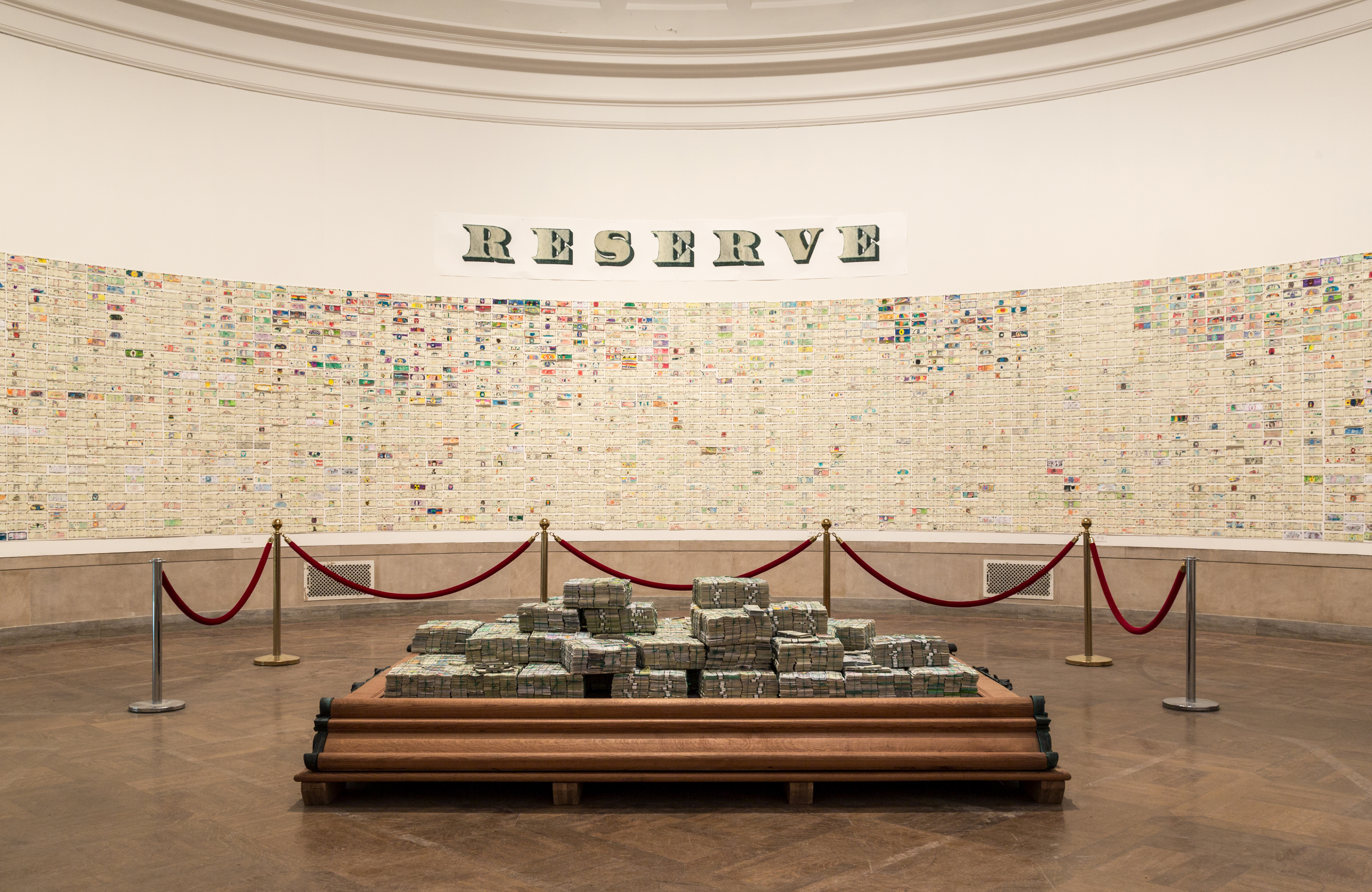
The Fundred Pallet, 2017. Features over 450,000 Fundreds in the rotunda of the Fundred Reserve at the Corcoran School of Art at George Washington University, Washington DC. Fundred Project, 2008-2019. Photo: Ben Tankersley. Courtesy of the Fundred Project.
ART21: What would you recommend to artists who want to respond to social or environmental-justice issues but may feel overwhelmed?
“My advice to anyone is: Don’t go chasing tragedy to make art.”
—Mel Chin
CHIN: I’m not a social-activist artist to be honest. My advice to anyone is: Don’t go chasing tragedy to make art. If you do get engaged [in a socially active project], it’s immediately more than yourself. It transforms you. A different stage of perseverance and empathy must come forth [from you]. Frustration will be part of it because it’s not like any other thing that you do. It’s definitely far from studio art, and it is no longer about your expression, and whatever comes out of it is an evolutionary situation. It’s a lesson in evolving.



